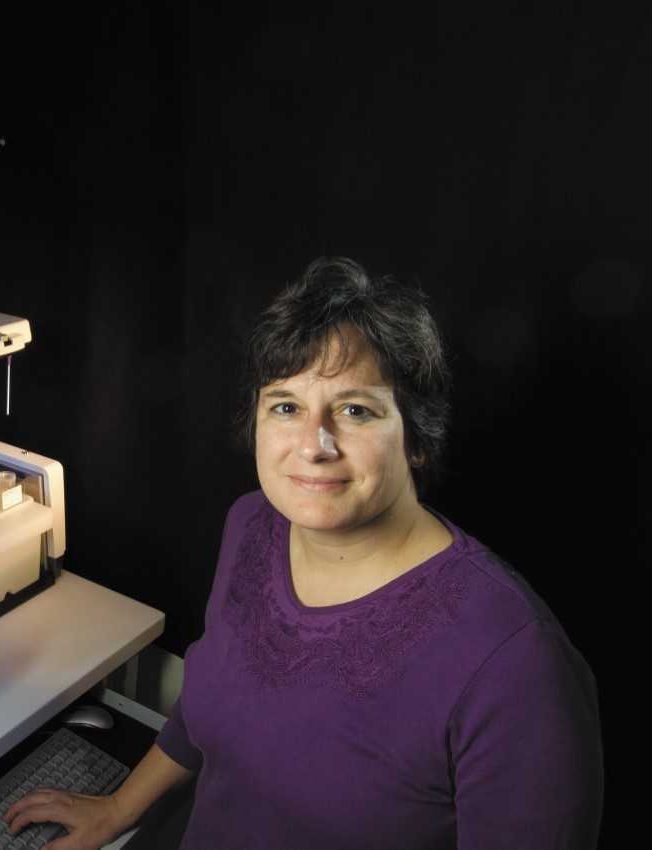Pregnant Woman’s Diet and Birth Mode Affect Infant’s Gut Microbiome, Study Shows

Communities of bacteria, called microbiomes, thrive everywhere in and on the human body. The digestive tract is just one of the places where bacteria — some dangerous, but most of them helpful — live.
 Hilary Morrison, senior scientist in the MBL's Josephine Bay Paul Center for Comparative Molecular Biology and Evolution. Credit: Tom Kleindinst
Hilary Morrison, senior scientist in the MBL's Josephine Bay Paul Center for Comparative Molecular Biology and Evolution. Credit: Tom KleindinstIn infants, gut bacteria are known to play a major role in development of the immune system and in their overall health. Now, there is evidence that a pregnant woman’s diet, as well as how her baby is delivered (vaginally or via cesarean section), can have a direct effect on the types and abundance of bacteria that populate her infant’s gut.
The study, published in Microbiome, was co-authored by MBL Senior Scientist Hilary Morrison and led by scientists at Dartmouth-Hitchcock Medical Center in New Hampshire. Morrison and MBL Distinguished Scientist Mitchell L. Sogin contributed their expertise in DNA sequencing to the study.
The team analyzed bacteria in the stool of 145 infants and compared it to their mothers’ diets during pregnancy. The babies’ gut microbiomes, they found, were dominated by four groups of bacteria, which, in the right abundance, have co-evolved with humans to aid in digestion: Enterobacteriaceae, Bifidobacterium, Bacteroides and Streptococcus.
Women who ate more red and processed meat had higher levels of Bifidobacterium in their babies’ guts than was found in the babies of women who ate more fruit. The babies of the fruit eaters also had more Streptococcus and Clostridium in their guts, bacteria which, in overabundance, can be pathogenic.
Surprisingly, the study revealed that with the same maternal food intake, some bacterial groups increased in abundance if children were delivered vaginally but decreased if they were delivered by c-section. This indicated that delivery mode had a more significant effect on the babies’ microbiome than researchers suspected.
Within the group of babies delivered by c-section, researchers found that babies of mothers who consumed more dairy products during pregnancy had a greater relative abundance of Clostridium compared to Bifidobacterium and other milk-digesting bacteria. This may be of concern because in high levels, Clostridium is a potential pathogen. The low relative abundance of dairy-digesting bacteria and high abundance of Clostridium could be related to an infant’s potential to develop lactose intolerance or dairy allergies.
“It’s very satisfying to work on a project that might improve human health, especially when looking at the microbiomes of babies and mothers,” says Morrison. “I think it’s going to be really interesting to find out how much the infant and mother’s microbiomes have to do with food tolerances later in life."
The researchers also suspect that some differences in infants’ gut microbiomes were due to differences in the composition of breast milk in their mothers, since more than 70 percent of infants in the study were exclusively breastfed.
Morrison and Sogin used two sequencing approaches to identify the types and relative numbers of bacterial species in the infants’ stool samples. One method quantifies the bacteria in a sample by targeting just one gene that all types of bacteria have (the 16S rRNA gene). In the other approach (shotgun metagenomics), the entire collection of bacterial DNA in the sample is randomly sequenced.
“We looked at both 16s rRNA tag sequencing and shotgun metagenomics, which is a much harder set of data to make sense of, but it’s a lot richer too, because you’re looking at all of the bacterial genes,” Morrison says.
The study is part of Dartmouth College’s Children's Environmental Health and Disease Prevention Research Center. The center’s mission is to address the health impacts of early life environmental exposures to prevent prevalent and life-threatening diseases in children.
The MBL researchers worked closely with two principal investigators from the center, Margaret Karagas and Juliette Madan and the study’s lead author, Sara Lundgren.